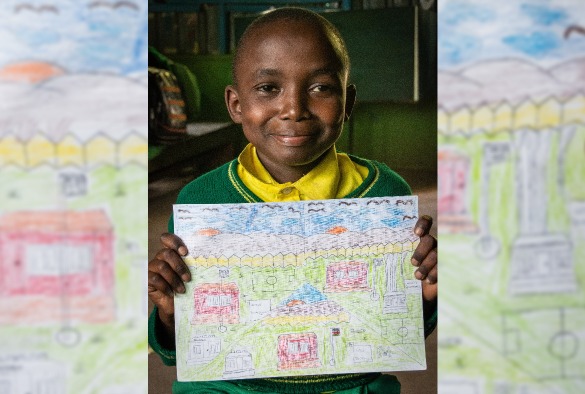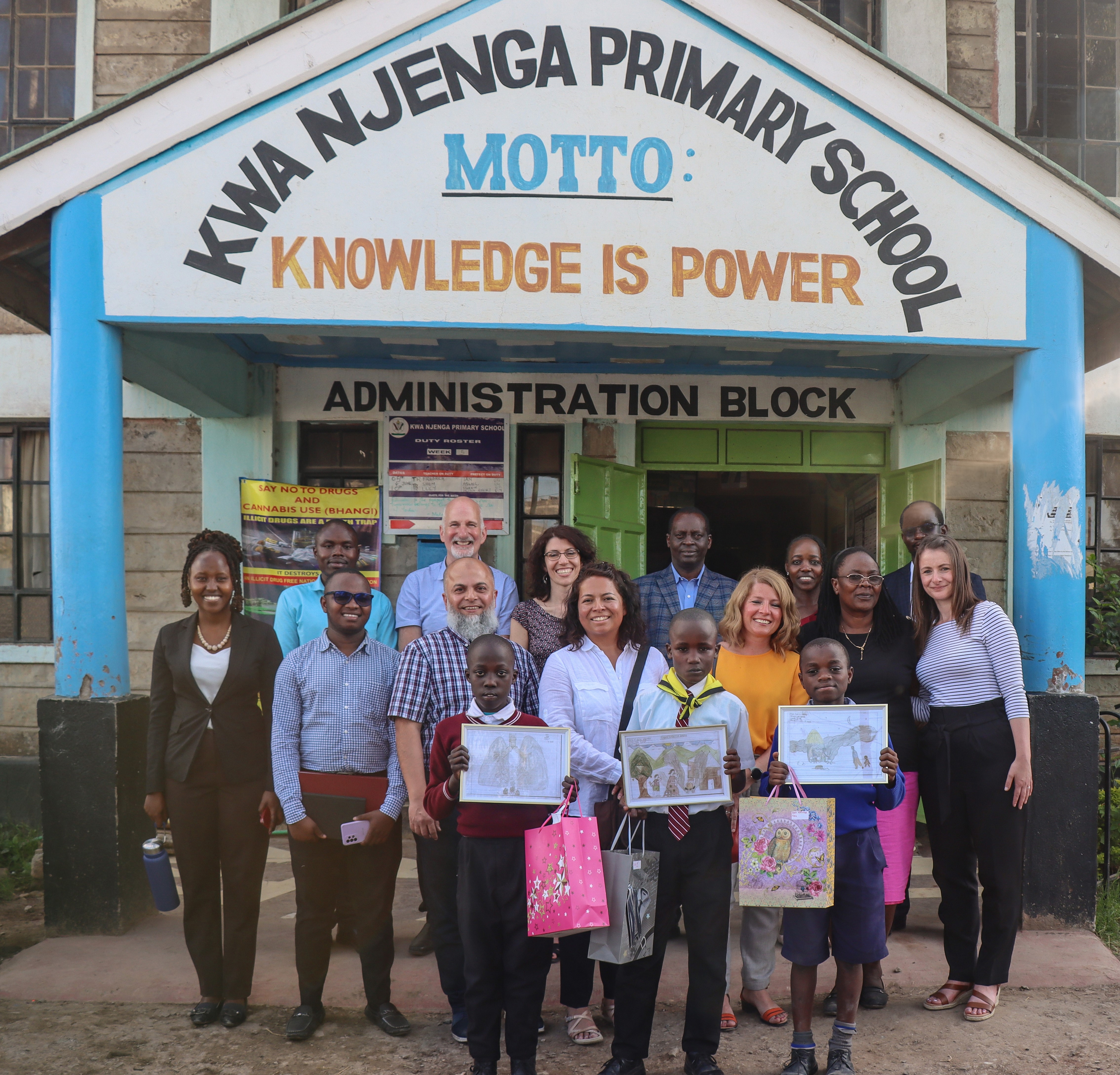
School pupils from two primary schools in Nairobi have created artwork to illustrate the urgent issue of household air pollution in sub-Saharan Africa, a matter that the University of Liverpool’s Institute of Population Health are working with partners to tackle.
Pupils from Mukuru kwa Njenga and kwa Ruben primary schools in a slum area of Kenya’s capital, Nairobi took part in the CLEAN-Air(Africa) project art competition, which invited them to create a drawing with the theme, ‘clean air for community health’. The best drawing from each school was selected by the University’s Prof Martin O’Flaherty, Head of Public Health, Policy & Systems Department.
During a research visit to the area, Dan Pope, Professor of Global Public Health at the University and Director of the NIHR Global Health Research Unit on CLEAN-Air(Africa), together with co-Directors, Dr Elisa Puzzolo and Dr James Mwitari from the Kenya Medical Research Institute (KEMRI), were joined by representatives from National Institute for Health and Care Research (NIHR) and Department of Health & Social Care. Here they were given a tour of one of the schools and saw first-hand the problem of air pollution from cooking with wood experienced by more than 90% of sub-Saharan African schools. They also saw the artwork produced by pupils from the school to represent air pollution in their communities.
During the visit, the two winners of the competition were presented with framed high-quality impressions of their artwork and participating schools received a selection of art supplies. The children who created the winning designs will also have the opportunity to present their work to the First Lady of the Republic of Kenya when she opens the CLEAN-Air(Africa) Air Pollution Centre of Excellence at KEMRI and is herself crowned as Patron of Clean Air for Community Health.
In sub-Saharan Africa, a substantial proportion of people rely on solid fuels (firewood, charcoal) for cooking and to heat their homes. However, the fumes they create are responsible for more than 680,000 premature deaths each year. CLEAN-Air(Africa) aims to provide policy-relevant evidence to raise population awareness of the issue and to support prevention through the transition to clean fuels and energy for cooking.

Representatives from KEMRI, University of Liverpool, NIHR and, Dept of Health and Social Care join Lena Kariuki, Head Teacher, Kwa Njenga Primary and competition winning pupils: Fedelis Onyimba, Fedelis Mathenge & Peter Lukoye.
Professor Pope said: “Through our research we have seen that children have a good understanding of how air pollution impacts their daily lives so we set a pilot art competition to capture some of these perspectives. The use of art is a really effective way of engaging with children, teachers, schools, and families on the issue of clean air. Creating artwork allows children to express the challenges they and their families face, in cooking food and heating their homes with smoky fuels and provides a springboard for important discussion on the topic. Significantly, the artwork created also supports our research and is a key element of the data we collect. We plan to extend this initiative to other schools in Kenya and Rwanda.”
Mrs Lena Kariuki, the head teacher from kwa Njenga primary school, said: “We have been excited to work with CLEAN-Air(Africa) as reliance on firewood for us is a major challenge. The cooks are very unwell from the smoke and we are all affected as it spreads. For us scarcity of firewood represents another challenge. Children are very poor in this community and will only come to school if they can get a meal of beans and maize. When there is no wood we cannot cook and children will go hungry or not come to school. Since we have worked with Prof Pope and colleagues, we have started to make plans for switching to cooking gas. The art competition has been really exciting for the staff and children at the school and we look forward to future engagement with the team”.
📸 Pupil from kwa Ruben school with his winning artwork